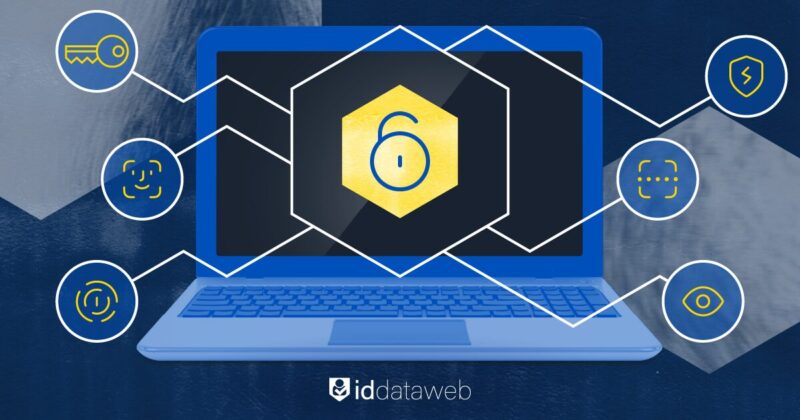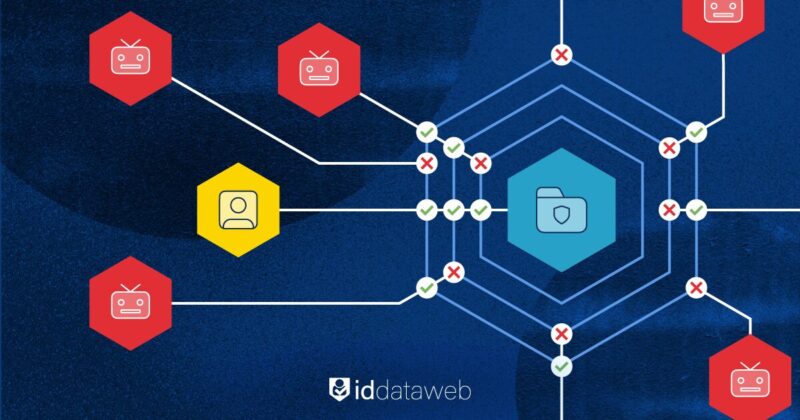One-time passwords (OTPs) have become a mainstay in modern authentication. Whether delivered by SMS, email, or push notification, these short-lived codes are easier to use than complex passwords and more secure than reusing the same password everywhere.
However, attackers have devised cunning ways to exploit or intercept OTPs, and the spread of social engineering and SIM-swapping has exposed serious weaknesses.
To security professionals, it’s clear that OTPs alone aren’t enough. Procurement teams often wonder if they should invest in alternative solutions—while user experience (UX) teams wrestle with how to implement new authentication steps without driving users away.
This article will examine where OTPs have become insufficient, the emerging methods that build upon or replace them, and how ID Dataweb’s passive risk analysis approach can layer onto OTPs to block fraud attempts.
Why OTPs alone aren’t enough
OTPs improved upon static passwords by introducing something ephemeral and dynamic. Unfortunately, they haven’t solved all security issues and in many cases can create their own pitfalls. Below are the key vulnerabilities that leave OTPs exposed:
- SIM-Swapping: Attackers call or trick telecom providers into transferring a victim’s phone number to the attackers’ SIM card. Once this is done, any SMS-based OTP goes to the fraudster instead of the legitimate user.
- Phishing: Hackers use fake login pages or well-crafted emails to trick users into sharing their OTP codes. Because OTP codes are only meant to last a short time, users often don’t realize how critical it is to protect them. If a user inadvertently provides an OTP to a fraudster, it’s effectively game over for that session.
- Spoofing attacks: Attackers can intercept or redirect messages if they compromise email accounts, exploit phone carrier weaknesses, or use malware on a victim’s device. Even advanced technologies like SS7 protocol exploitation allow criminals to stealthily capture SMS OTPs in certain cases.
Exploring OTP Alternatives
The good news is that the security industry has developed multiple authentication methods that are more resilient than a single OTP. Let’s take a look at a few options:
Multi-Factor Authentication (MFA) variations
Biometric Factors
Using fingerprints, facial recognition, or voiceprints can mitigate the risk of someone stealing or intercepting a code. Biometrics are not foolproof—liveness detection issues and advanced spoofing exist—but they do raise the bar significantly for attackers.
Hardware Security Keys
Physical tokens (e.g., YubiKey) follow open standards like FIDO2 and rely on cryptographic operations that are difficult to intercept or replicate. Users must have the device physically present, which makes remote account takeover far harder.
Authenticator Apps
Tools like Google Authenticator, Microsoft Authenticator, or Authy generate time-based one-time codes on the user’s device—no SMS or phone carrier involved. This eliminates some SIM-swap and carrier-level vulnerabilities, though it still requires the user to secure their device properly.
Passwordless authentication
Push Notifications
Instead of typing a code, the user simply taps “Approve” or “Deny” in an app. This method can be coupled with device verification (e.g., cryptographic signatures) and biometrics.
WebAuthn and FIDO2
Modern web standards let browsers and apps authenticate users using built-in platform authenticators or external keys. Because private keys never leave the device and are tied to a specific domain, it’s nearly impossible for attackers to replicate or phish.
ID Dataweb’s approach: Just-In-Time Step-Up Authenticaton
ID Dataweb strengthens the OTP with a “Just-In-Time” layering method. The majority of users will only need their quick, linked-based authentication, but if risk factors are detected when they tap the link, the system automatically escalates to additional steps—such as knowledge-based questions or biometric ID checks.
IDataweb accomplishes this through:
Real-time device and behavioral data
The system collects dozens (or even hundreds) of attributes: IP address, browser configuration, OS type and version, time zone consistency, and more. These are compared to known historical patterns of both good and bad behavior.
Environmental checks
Threat intelligence feeds (like blacklists for IP addresses, device IDs, or phone numbers) alert the system if the user’s environment is associated with prior fraud.
Ongoing, zero-trust assessment
Each new login attempt is evaluated against a dynamic risk profile. If it falls within expected bounds, the user continues with minimal friction. If it deviates dramatically, the system flags it for extra steps.
A multi-tiered, step-up authentication flow
ID Dataweb leverages a tiered authentication flow that begins with low-friction methods and escalates only if risk factors warrant it:
- FastTap MFA: A quick link or code is sent; for 80–90% of users, no further challenge is necessary.
- Dynamic KBA: For moderate-risk sessions, the user answers knowledge-based questions to confirm they’re genuinely who they claim to be.
- BioGovID: If configured by the security team, in rare, high-risk situations, the user must scan a government-issued ID and provide a live selfie. Verification typically confirms a match in under a minute.
Through ID Dataweb’s no-code policy engine, you decide what triggers a step-up: new device, flagged phone number, suspicious IP address, or user velocity anomalies (e.g., logging in from five countries in two hours).
You can also choose when to auto-deny vs step-up. You may want to outright deny certain risk signals (like known blacklists) while stepping up others to a second or third factor.
How passive risk analysis enhances One Time Password Authentication
In short, this approach continuously assesses signals about the user’s device, behavior, and environment without forcing the user to take additional actions—at least not until something looks suspicious. That means:
Most users fly through
The vast majority of logins match expected historical patterns: the same region, same device, normal velocity. OTP—whether via SMS, app, or email—should suffice.
Elevated risk triggers stop fraudsters
If the phone number is flagged as suspicious or the device fingerprint is new and inconsistent with previous usage, ID Dataweb escalates the session to a higher-assurance check before granting access.
Examples of a thwarted attacks
SIM-Swap & OTP Hijack
- Attacker Gains PII
- The attacker, armed with basic personal details of the victim, convinces a telecom carrier to activate a new SIM with the victim’s phone number.
- User Initiates Login
- A legitimate user tries to log in, and the OTP is sent to what is now the attacker’s phone number.
- Risk Signals Detected
- Phone flagged as “recently ported” or as having suspicious activity.
- Location mismatch or a brand-new device signature identified
- Step-Up Challenge
- Before allowing a simple OTP-based entry, ID Dataweb escalates to a higher-security factor—such as knowledge-based questions (KBA) or a biometric ID check.
- Outcome
- The attacker fails because they can’t produce the correct personal answers or pass a biometric test.
- The legitimate user can still authenticate, albeit with an extra step for safety.
Phishing or spoofing attempt
- Credentials are phished from a legitimate user
- The attacker creates a fake login form, intercepts the user’s credentials and OTP.
- Session analysis
- ID Dataweb identifies the login attempt is coming from a newly flagged IP range known for phishing.
- The device fingerprint differs from the user’s normal environment.
- Immediate Escalation
- Instead of simply allowing the OTP to finalize authentication, the system triggers an additional verification step, such as dynamic KBA, or a phone possession challenge beyond SMS.
- Outcome
- The phisher cannot pass the second factor. Depending on preset parameters, the session is either flagged as high risk to the security team or terminated.
Most legitimate users will never notice the underlying risk engine. They’ll simply receive one code or complete a quick confirmation. Only suspicious profiles are asked for more detail, which helps maintain high satisfaction and reduce login abandonment.
Conclusion
OTPs remain a crucial piece of the authentication puzzle, but they can’t stand alone against the diverse tactics employed by modern cybercriminals. From SIM-swaps to phishing sites, attackers know how to exploit the weaknesses of traditional one-time codes. The solution isn’t to abandon OTPs entirely, but to fortify them with a multi-layered, adaptive approach.
In sum, ID Dataweb accomplishes this with a three-pronged appproach:
Passive risk analysis from ThreatMetrix, Telesign, and other data providers reveals hidden anomalies in real time, blocking high-risk behavior before damage occurs.
Step-up authentication ensures that only genuinely suspicious users see friction—legitimate users remain largely undisturbed.
Policy engines allow dynamic orchestration, tailoring risk thresholds and next-step actions to your organization’s unique environment.











